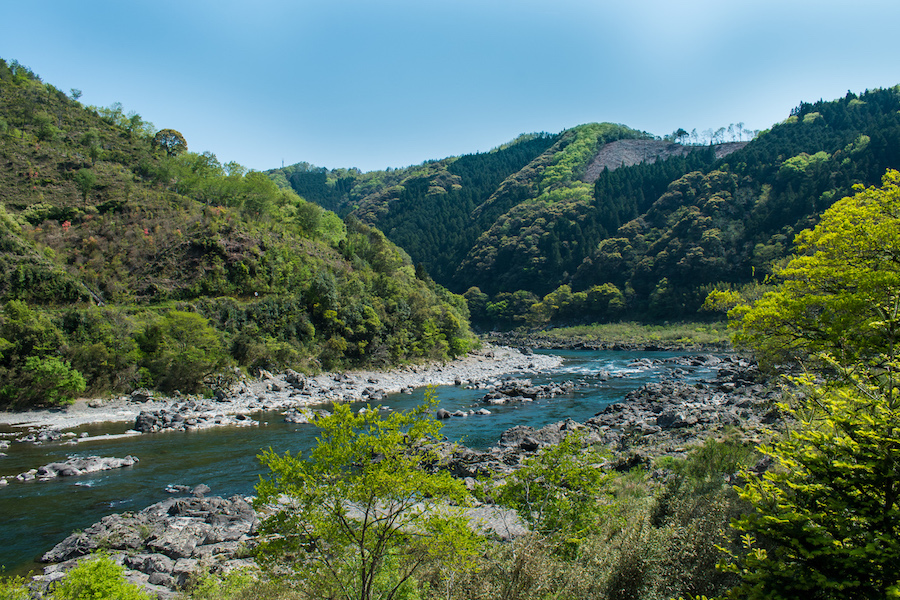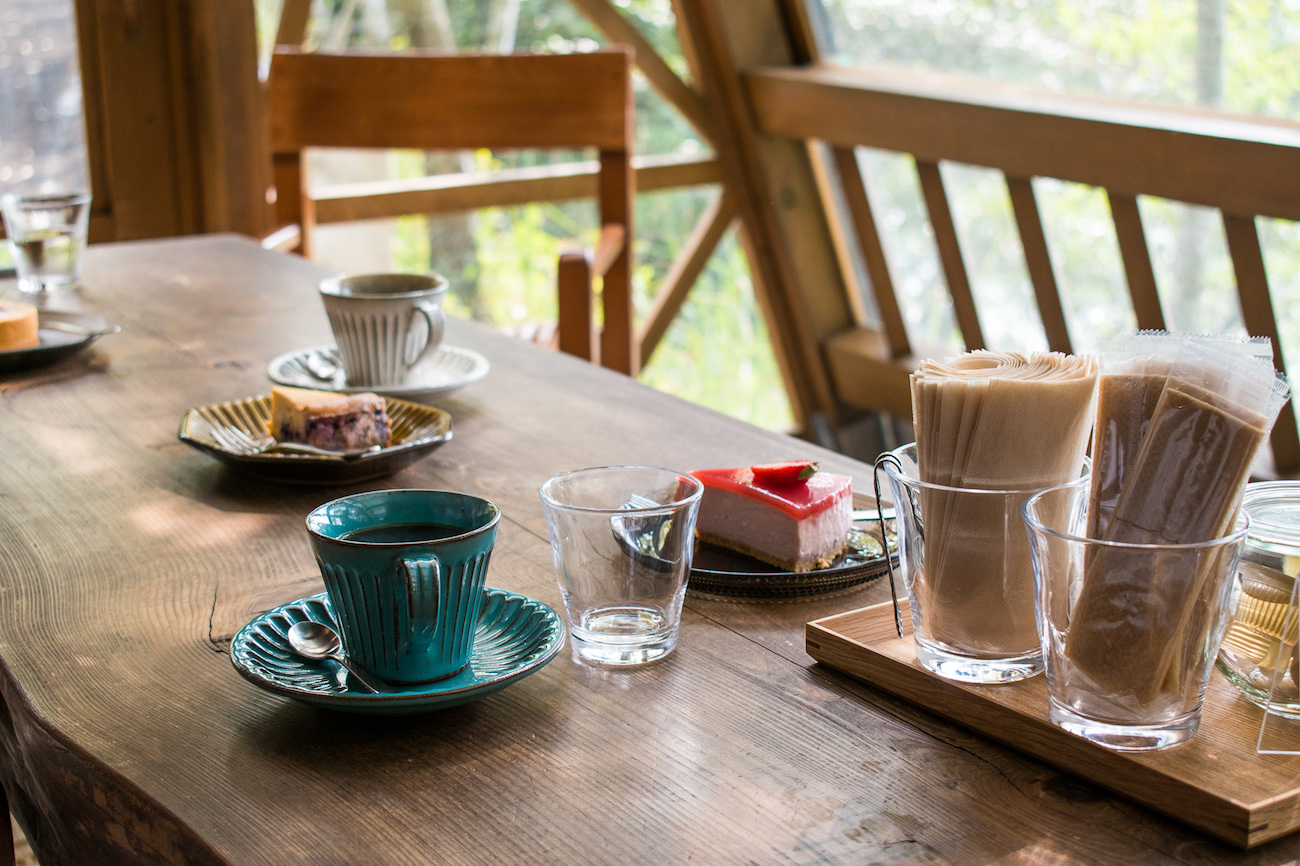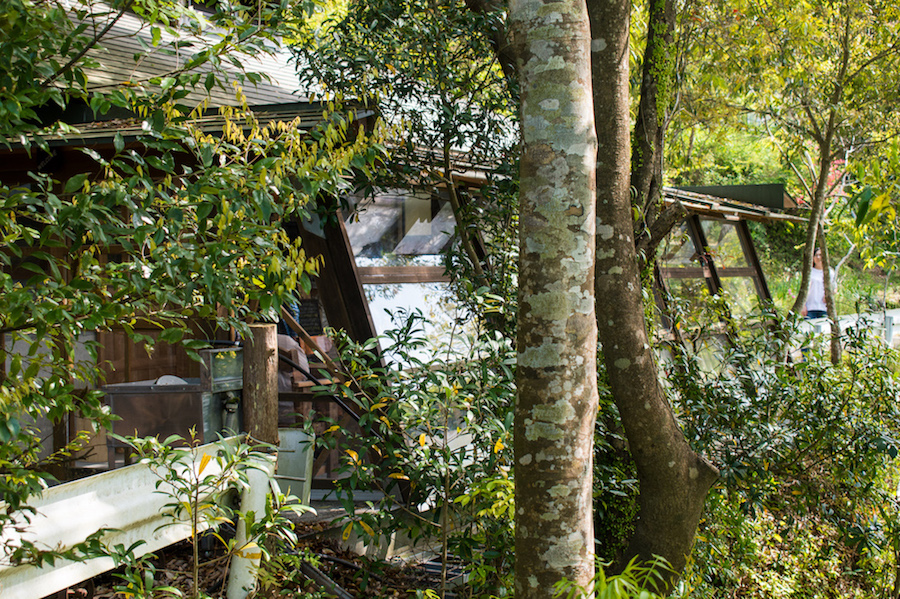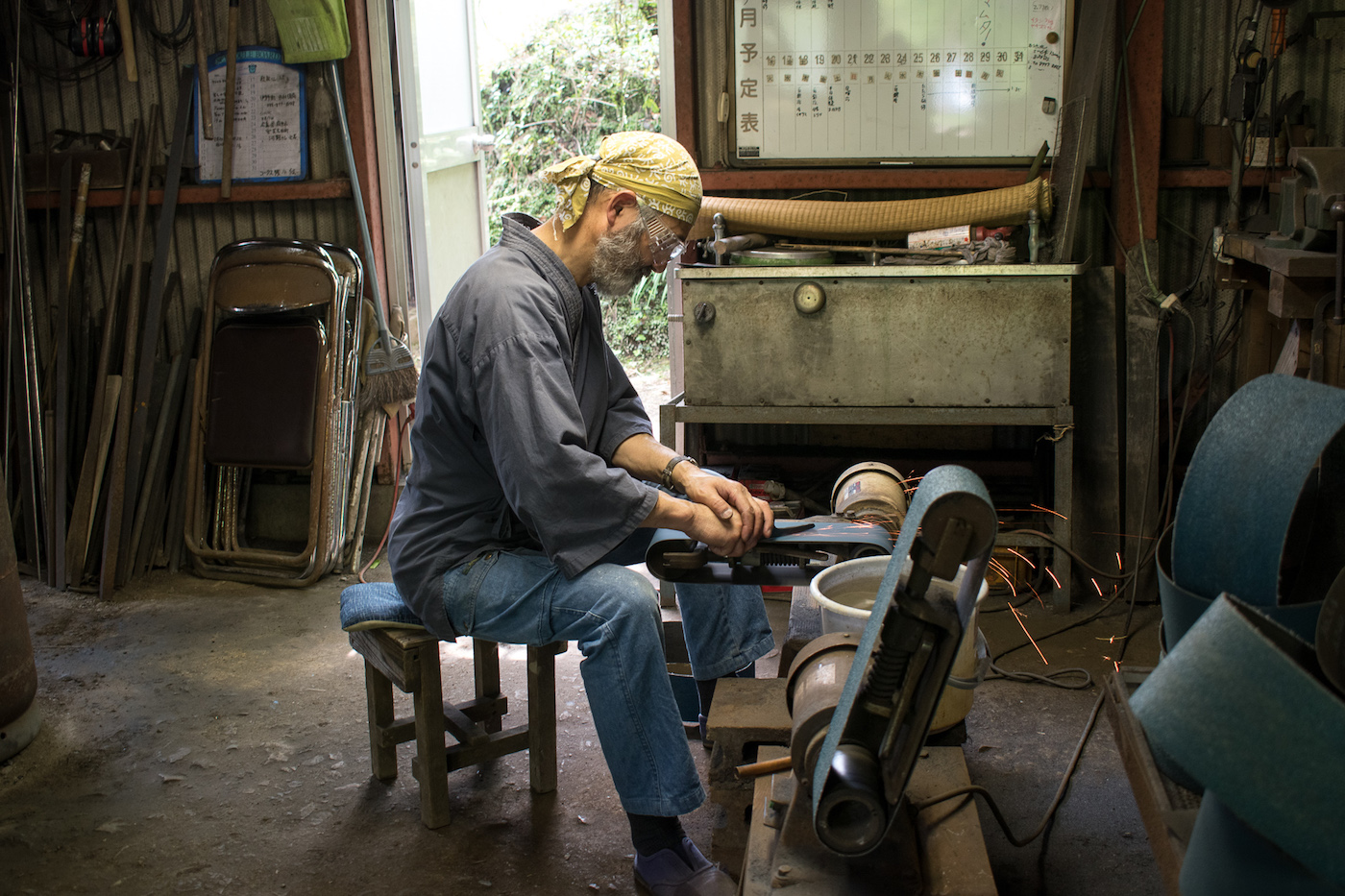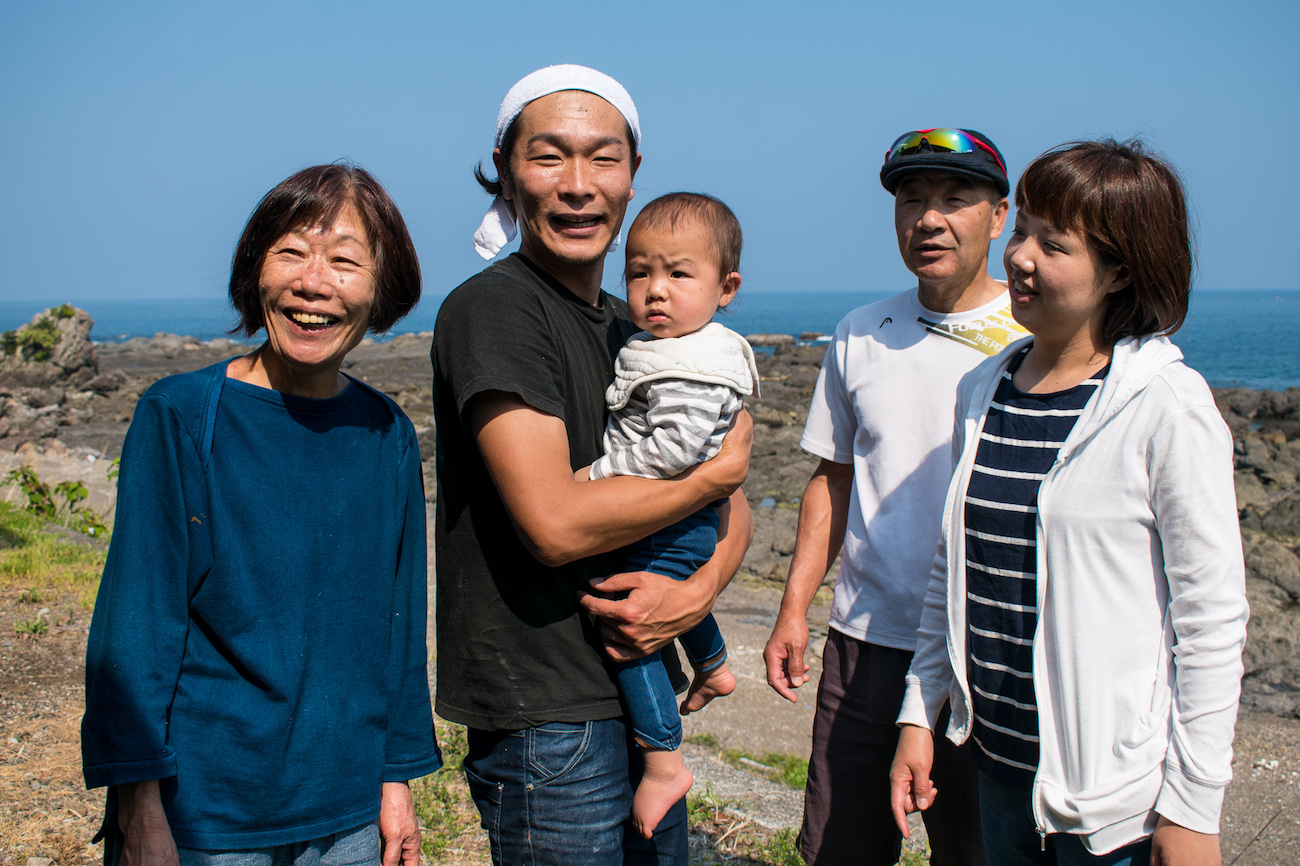日本でも有数の多様性と自然美を誇る県、高知県。しかし、その注目度は不当と言えるほどに低い。というのも、高知が本州から離れた四国南部という、やや孤立した位置にあること、あるいは険しい山々に囲まれているがゆえに、見落とされてしまっているということも考えられる。
もしかすると、高知南部には手つかずの自然が残っているため、それを知る人々がありのままの環境を保護するため、あえて派手に公開せずにいるというのが一番近いのかもしれない。
険しい山脈が清らかな水に注ぎ込む様子や、1500万年以上に及ぶ歴史を今に伝える天然の砂岩彫刻など、まだ見ぬ日本の一面を見てみたい、と言う方には、四万十川や竜串海岸を擁する高知県南西部は必見スポットだ。
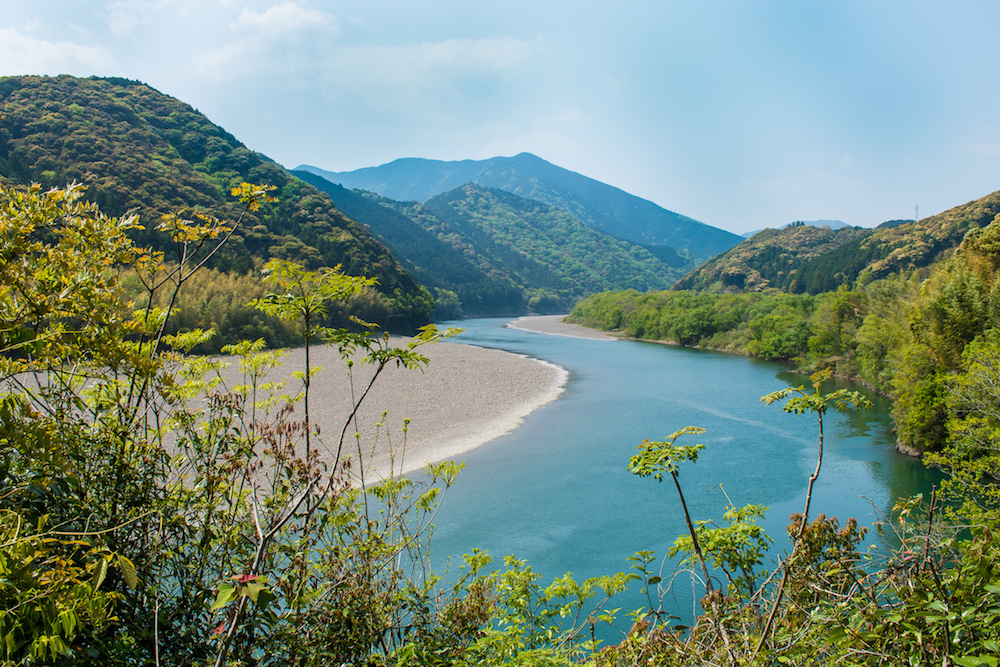
高知南西部の命の源、四万十川
「日本最後の清流」として知られる四万十川は、高知県南部をアクアブルーのリングのごとく流れている。
川の全長は四国で最長の196キロメートル。しかし、四万十川はただ見事な川、というではなく、地元で暮らす人々の生活そのものだ。漁師たちは日々、地元の名産である手長エビや味の良い川海苔の漁にいそしむ。いずれも地元の素晴らしいレストランや居酒屋で味わうことのできる郷土食だ。
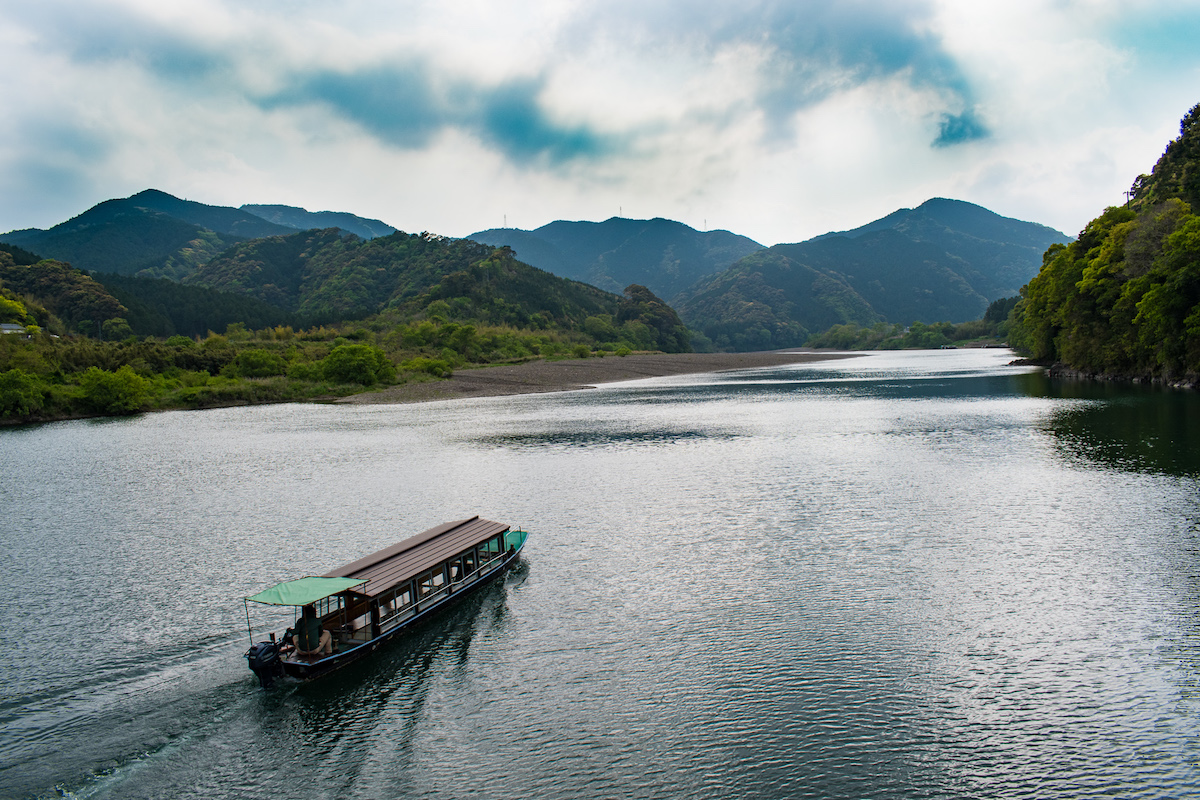
アウトドア派にとって、四万十川は自然のワンダーランドであり、手付かずの山岳地帯に沿って終わりなきハイキングアドベンチャーを楽しむことができる遊び場だ。現地の素晴らしい自然にどっぷり浸りたいという方には、ウォータースポーツも豊富だ。険しい山や谷の合間を流れる清流でカヌーやクルージング、パドルボードやスイミングなどを満喫できる。
パワースポットめぐりをしたい、という方には、この美しい景色の中を行く四国八十八ヶ所霊場巡りもおすすめ。四国全域にある88の寺を巡る霊場巡りでは、四万十川界隈に見どころがいくつもある。川周辺には岩本寺や延光寺、そして少し南に足を延ばすと金剛福寺もある。

旅の楽しみ方
四万十川は全長約200キロメートルに及ぶが、四万十川を眺めながらこの地域を探索するなら、よりアナログの交通手段がおすすめで人気も高い。
川沿いや緑豊かな山腹の斜面にもサイクリングコースがあるので、じっくりとこの地域の美しさを堪能するにはもってこいだ。四万十川全域を網羅するなら、3日間は日程を組みたいところ。
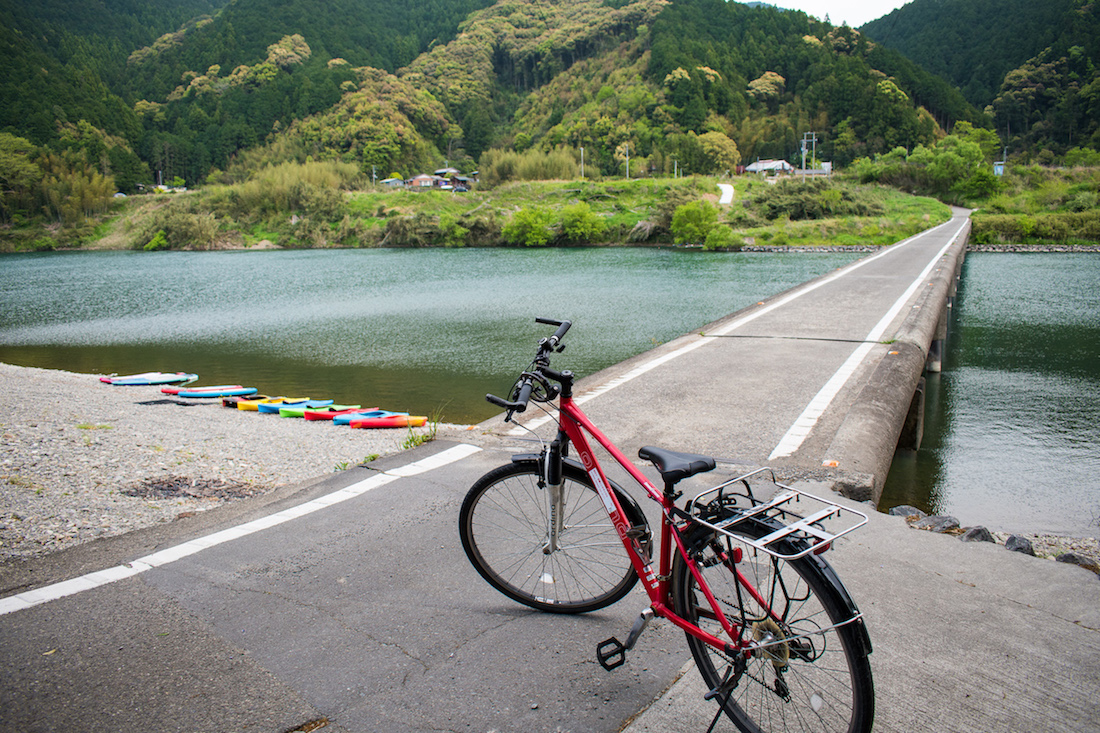
レンタサイクルなら、中村駅に程近い四万十市観光協会に隣接する「四万十川りんりんサイクル」へ。マウンテンバイクなら、レンタル料は24時間あたり1500円。フレンドリーな地元スタッフと仲良くなって、四万十川のサイクリングコースのローカル情報などを聞いてみるのもいい。
違った角度から景色を楽しみたい方には、レンタルカヌーがおすすめだ。「四万十カヌーとキャンプの里かわらっこ」の四万十川カヌーツアーに参加すれば、1人乗りカヌーの技術を習得できる。カヌーのレンタル料はツアー内容によって異なるが、5200円から9200円程度。天候に恵まれれば、キャンプ場に「本日の宿」を建ててみるのもいいだろう。
他人に船頭を任せてリラックスしたいなら、中村駅の北西にある、松廣屋夫妻が経営する小さなリバークルーズ会社「舟母浪漫松廣屋」へ。ここの船は、1930年代に商品を輸送するために使われた「舟母」と呼ばれる屋根のない帆船。歴史ある船でのクルージングが、1人2500円で楽しめる。

カフェ文化
高知は、素敵なカフェにも事欠かない。これだけの景色に恵まれているのだから、それも納得だ。もし、自宅に高知南部風の見事な庭があったなら、コーヒーを味わいながら景色を眺め過ごしたくなるだろう!
この地域を訪れる人々が最初に立ち寄る場所、道の駅「四万十とおわ」。ここは日本の道の駅の中でも、有数のロケーションだ。四万十川を見渡す崖の上にある「とおわ食堂」では、地元の新鮮な食材を使ったボリュームたっぷりの伝統的な日本料理を味わうことができる。情報通によると、おすすめはうなぎだという。少々値は張るが、甘くとろけるジューシーな味わいで、高知でも指折りの一品なのもうなずけるだろう。
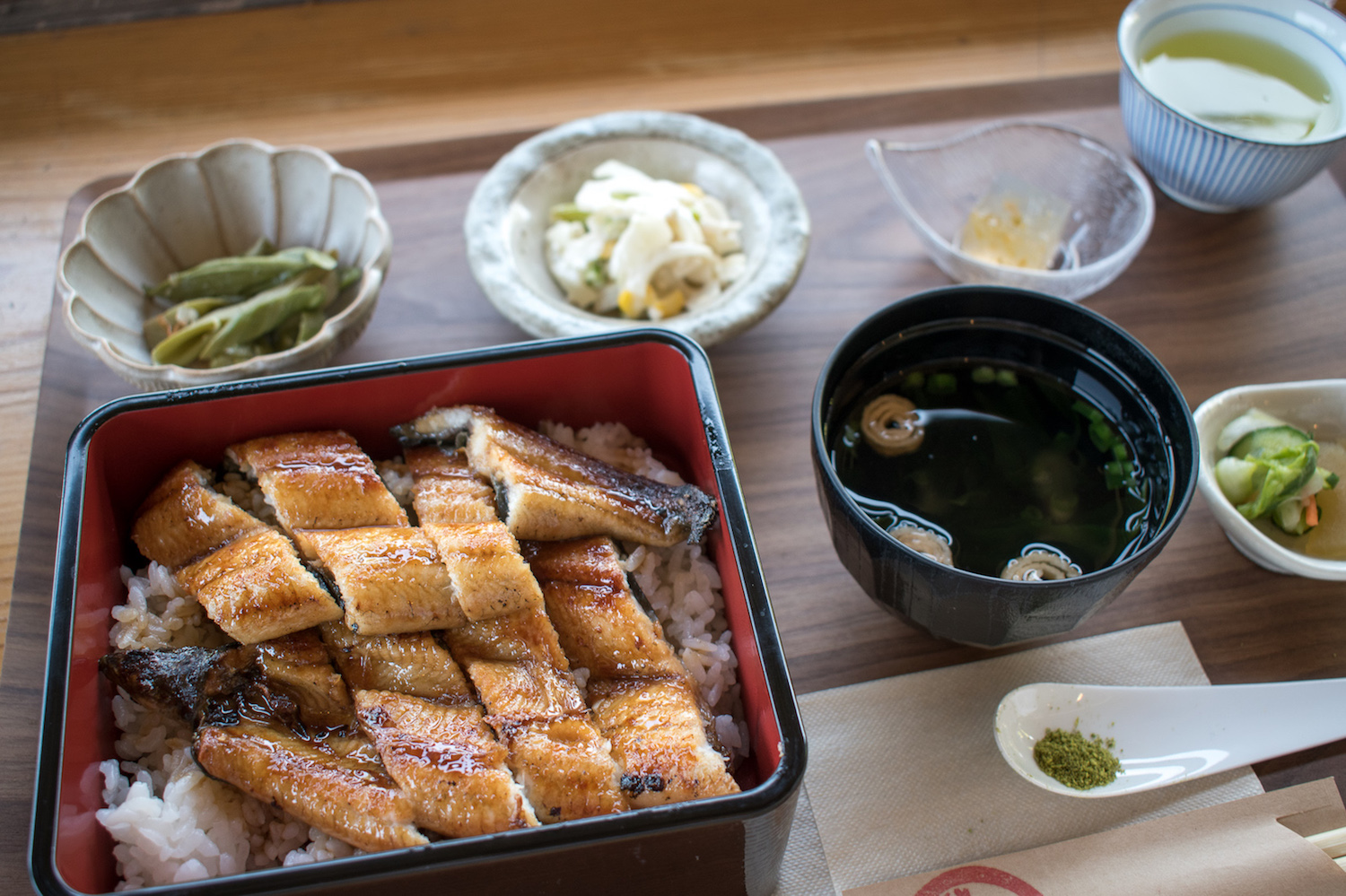
もう少し素朴で、最も親しみやすい食事処の1つが、四万十市西土佐にあるコミュニティ重視の農家レストラン しゃえんじりだ。地元の女性グループが経営する田舎風のビュッフェ式レストランでは、地場産の新鮮野菜や果物、厳選された肉を使った愛情たっぷりの伝統的な家庭料理を堪能することができる。
四万十川が目の前に迫るシェードツリーコーヒーは、繊細な建築デザインと重力に逆らうような角度の店構えが反響を呼び、高知県で最も魅力的なカフェの1つに数えられる。店内のほとんどがガラスや風防ガラスで作られているため、もれなくどの席からでも、この地域の素晴らしい景色を眺めることができる。そして何より、店内で楽しめるコーヒーと、店主の気分や仕入れによって日替わりの自家製ケーキなどの本格スイーツは逸品。
地元の職人
高知県南部の魅力は、美味しいグルメや豊富なアウトドアレジャーだけではない。ここには、とても素晴らしい職人が数多くいる。
四万十川の川畔と隣接する山に挟まれた「工房くろがね」は、地元鍛冶職人の林信哉氏が経営するたたら製鉄工房だ。ここでは、観光客でも鍛冶屋体験に参加し、日本の伝統的な『たたらナイフ』をはじめ、自分だけの鍛冶製品を製作することができる。
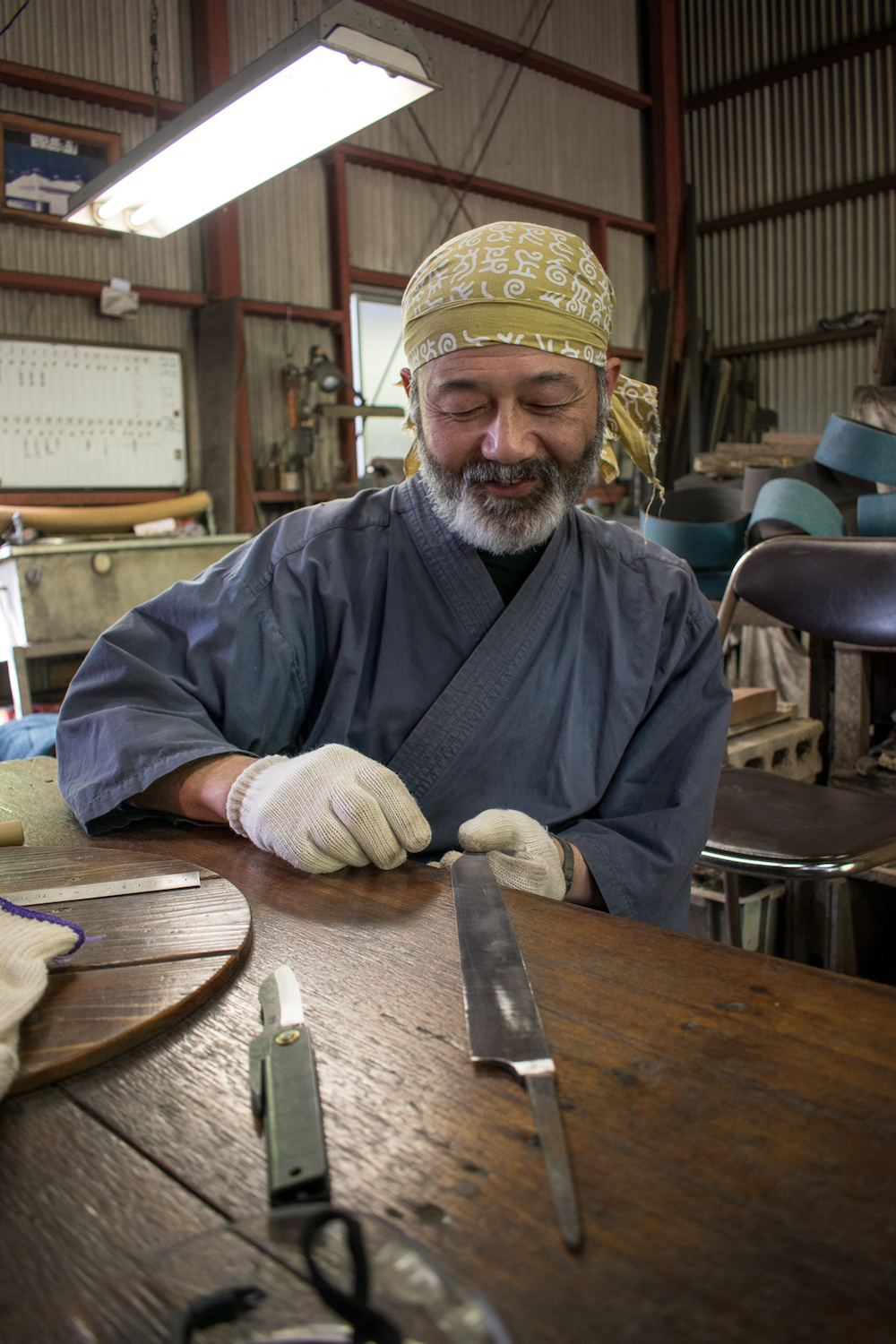
地元の名産は、他にもある。四万十の北へ足を延ばし、険しくごつごつした黒潮の海岸線近くまで行くと、吉田拓丸氏とその家族が経営する製塩工房がある。工房では、近くの海の恵みを生かした「土佐の塩丸」という天日塩を製造している。太陽の光と忍耐、そして丁寧な作業をかけ合わせて作られた塩は、日本でも最高クラスのピュアで味わい深い塩だ。1人1500円で、塩づくり体験もできる。体験コースの参加者には、お土産に「土佐の塩丸」1瓶がついてくる。
海を抱きしめる
高知県は山に囲まれた県であることは確かだが、竜串まで足を延ばすと、多様な景観を誇る高知の、まったく異なる表情に出会うことができる。高知最南の海岸に位置する土佐清水市の竜串は、紺碧の海と奇岩怪石が重なる海岸、そして海洋生物が生息する沿岸の景勝地だ。
ユニークな景観と自然が織りなす豊かな歴史から、竜串海岸は日本初の海中公園に指定された。あたり一面、くぼみのあいた岩が層になっている様子から、その歴史が実感できる。海岸一帯に広がる砂岩層は、地殻移動や地震が続いた2000万年前から1500万年前の時期に形成され、それが黒潮の波や風によって少しずつ浸食された自然の彫刻だ。

海上の景色も素晴らしいが、それは氷山の一角。海に潜れば、神秘的な海水美と球根状のサンゴの群集、そして色鮮やかな魚が彩る未知の世界が広がっている。高知県の沿岸地域の魅力を間近で堪能するなら、グラスボートあるいは足摺海底館がおすすめ。
グラスボートは、ガラス張りの船底から海中の様子を眺めることのできる観光船 。竜串の観光中心地と見残し海岸を結ぶコースで片道約20分。料金が大人1560円、子供780円だ。海底7メートルにある足摺海底館は大きな海中窓のついた水中観察タワーで、地元の海で暮らす海洋生物を自然の生息地で観察できる。入場料は大人900円、子供450円 。
ウェブサイト:竜串観光振興会

—
All photos by Lucy Dayman
—
Lucy Dayman | ルーシー・デイマン
オーストラリア生まれ。2016年、オーストラリア・メルボルンでのカルチャー・音楽雑誌の編集の仕事を辞め、日本で旅をしながら仕事を始める。フリーランスライターとしての仕事と旅の傍ら、フィルム写真を撮影している。
Instagram: @lucy.dayman.
HP: lucydayman.com
Uncovering the hidden delights of Kochi Prefecture
Arguably one of the most diverse and naturally stunning prefectures in Japan, Kochi is criminally overlooked. Perhaps the reason is the area’s slightly isolated position at the southern pocket of Shikoku, or maybe, the rugged mountains effectively hide the area from prying eyes.
An even better guess though is that the untouched beauty of southern Kochi is so great that those in the know want to keep the place a secret in an effort to maintain its pristine atmosphere.
For those looking to uncover a side of Japan, one where rugged mountain ranges pour down into crystal clear water and where sandstone sculptures tell the tales that go back over 15 million years, you need to add The Shimanto River, the Tatsukushi coast and wider southwestern Kochi Prefecture to your must-visit list.
The Shimanto River, the lifeblood of southwestern Kochi
Known to be the “last remaining limpid stream in Japan,” the clear water Shimanto River runs like an aqua-blue ring running around the southern pocket of Kochi.
At 196-kilometers in length, the river is the longest in Japan’s Shikoku region, but it is far more than just an impressive body of water. For those locals that live here, it’s a way of life. Fishermen work tirelessly collecting long-armed river shrimp and delicious local freshwater nori, two local dishes ubiquitous in the area’s impressive restaurants and izakayas.
For lovers of the outdoors, the Shimanto River is a natural wonderland, a playground offering endless hiking adventures along the landscape’s many untouched mountain terrains. For those who like to immerse themselves in the stunning nature of the area fully there are also many watersports; canoeing, cruising, paddleboarding and swimming opportunities aplenty in the crystal clear waters that flow through the peaks and valleys of the rugged surrounds.
Those on a spiritual quest, the area is a breathtaking backdrop to the famous Shikoku 88 Temple Pilgrimage trail, a trail which runs the entire circumference of Shikoku with multiple highlights near the river area. Some of the temples neighboring the Shimanto River include Iwamotoji, Enkoji, and Kongofukuji a little further down south.
How to travel around
Although the length of the Shimanto River clocks in at a little under 200 kilometers, exploring the area by more analog methods of transport is a very doable and popular way to see the Shimanto River.
Bicycle routes weave their way along the riverbeds and up the lush green hilly mountainsides, and they’re a great way to take your time and appreciate the beauty of this corner of Kochi. To cover the entire river, it’s worth putting aside about three days.
One of the easiest, most accessible ways to pick up a pair of wheels is by visiting the Shimantogawa Bicycle Rental Centre which is located right by the Shimanto Tourist Information Center in town, just by Nakamura Station. When you do pick up a mountain bike, which costs ¥1,500 per 24 hours take some time to chat with the friendly local staff about some local tips on the best ways to tackle the Shimanto River circuit.
If you want to see the area from a different angle, canoe rental is another excellent way to explore. Visit the Shimanto Canoe and Camp Village Kawarakko to sign up for a canoe tour along the Shimanto River, and master the art of solo canoeing. Canoe rental costs ¥5,200 to ¥9,200 depending on the package. If the weather is right, and you want to hang around a little longer, the campsite here is a great place to set up a temporary home base.
To kick back and let someone else take charge of the navigation, head on the northwest of Nakamura train station to find Semba Roman Matsuhiroya, a small river cruise company run by husband and wife pair Mr. and Mrs. Matsuhiroya. The boat you’ll find here are called senba and are a roofless style vessel which in the 1930s was used to transport goods. A cruise on one of these historic boats costs ¥2,500 per person.
Cafe culture
Kochi is a prefecture not short on impressive cafes, which is fair given the landscape. If your backyard looked as stunning as southern Kochi, you’d want to spend your days sipping coffee and admiring the views too!
The Road Station Shimanto Towa is typically the first port of call for those traveling to the area, and for a road stop it’s got to have one of the best locations in Japan. Situated atop a cliff looking out over the river, the Towa canteen offers hearty classic Japanese cuisine made with fresh local produce, an insider’s tip: try the unagi (eel), it may be a little more expensive, but tender, sweet and juicy, you’ll see just why it’s one of Kochi’s most famous dishes.
A little more rustic, and one of the most endearing culinary destinations is the Farmhouse Restaurant Shaenziri, a community-centric restaurant located in Nishi Tosa, Shimanto City. Run by local ladies from the area, this countryside buffet-style restaurant offers an incredible spread of local fresh vegetables, fruits and select meats prepared in a classic homestyle fashion, infused with love and love and care.
Precariously perched over the Shimanto River, Shade Tree Coffee is one of the most stunning cafes in Kochi, thanks to its careful architectural design and love of almost gravity-defying angles. Predominantly consisting of glass and clear perspex, no matter where you sit, you’re always afforded incredible views of the area. Beyond that, the menu is a coffee and mouthwatering cake and style affair, with options rotating regularly.
Artisans of the area
As well as producing incredible food and providing fertile ground for outdoor adventures, it seems that this side of Kochi is also home to some very fascinating artisans.
Located between the riverbanks of the Shimanto River, and the neighboring mountains, Workshop Kurogane, is a Tatara ironmaking workshop run by local blacksmith Nobuya Hayashi. Here guests can sign up for a personalized one on one class and craft their very own piece of authentic Japanese Tatara knives and other blacksmith wares.
For local produce of a different kind, head to the rugged, rocky coastline of Kuroshio, north of Shimanto where you’ll find Soltyve, a salt-making workshop run by Takumaru Yoshida and his family. The company produces what they call Tosa no Shiomaru a pure, sea salt naturally derived directly from the neighboring sea. Harvested using sunlight, patience, and hard work, the salt is some of the most pure and delicious you’ll find in Japan. You can sign up for a class to make your own salt for ¥1,500 per person which includes your own jar of Tosa no Shiomaru to take home.
Embrace the sea
It’s easy to assume that Kochi is a prefecture covered in mountains, however, visit the nearby Tatsukushi, and you’ll find a completely different side of this diverse landscape. Positioned on most southern coast of Kochi, Tosashimizu, Tatsukushi is a coastal region home to vibrant aqua water, fascinating geological rock formations, and marine life.
This location was awarded Japan’s first nationally-designated oceanic national park, thanks to its unique landscape and rich natural history. It’s a history which can practically be read on the layers of potholed rocks scattered around the area. These sandstone formations which run along the cost were formed around 20-15 million years ago by a series of tremors and earthquakes and were naturally sculpted over time by the Kuroshio Current.
Above the water the landscape is stunning but that’s just the tip of the iceberg, below sea level is an entirely new world of mystical aquatic beauty, bulbous coral formations, and colorful fish. There are two excellent ways to get up close and admire this side of Kochi, the Tatsukushi glass-bottom-boat and Ashizuri-Kaiteikan Under Sea Aquarium.
Traveling between the central area of Tatsukushi and the coast of Minokoshi, the boat journey takes about 20 minutes each way and costs ¥1,560 for adults and ¥780 for children. Located seven meters beneath the ocean surface, the Ashizuri-Kaiteikan Under Sea Aquarium is like an underwater observation tower featuring large portholes for viewing the local marine life in its natural habitat, access the aquarium costs ¥900 yen for adults and ¥450 yen for children.
Web: Tatsukushi Tourist Organization
—
All photos by Lucy Dayman
—
Lucy Dayman
Originally from Australia, in 2016 Lucy left her job as an editor of a culture and music magazine in Melbourne to live, work and travel in Japan. Between freelance writing and traveling, she’s been dabbling in film some very amateur film photography, which you can check out on her Instagram: @lucy.dayman. Check out her other writing work and photos at lucydayman.com
